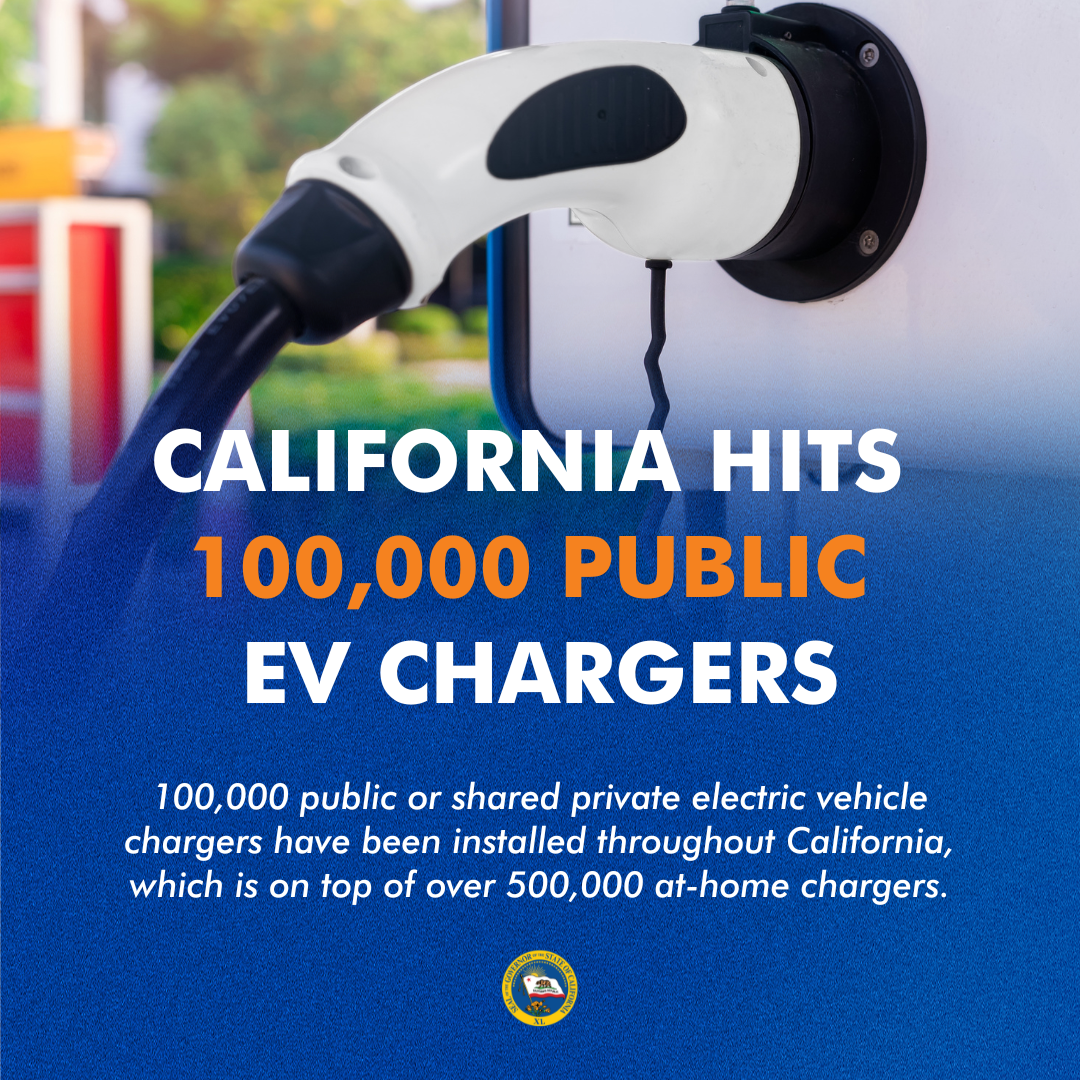WHAT YOU NEED TO KNOW: 100,000 public or shared private electric vehicle chargers have been installed throughout California, which is on top of over 500,000 at-home chargers. This comes just weeks after the approval of a $1.9 billion plan to build a bigger, better charging network.
SACRAMENTO – Today, Governor Gavin Newsom announced that California has surpassed 100,000 public and shared private electric vehicle chargers installed statewide, just weeks after unprecedented funding was approved to build a bigger, better network of charging and refueling infrastructure for zero-emission cars, trucks and buses – the most extensive network in the nation.
This is on top of more than 500,000 at-home chargers that Californians have installed for personal use.
Sales of zero-emission vehicles (ZEV) have skyrocketed more than 1,000% in the last decade.

One in every four new cars sold last year in California were zero-emission. Last year, the state also surpassed its goal of selling 1.5 million zero-emission vehicles and its goal to install 10,000 fast chargers for electric vehicles — both ahead of schedule.
“No other state in the nation is doing as much as California to make our tailpipe-free future a reality.
With more zero-emission vehicles sold last year than ever before and more than 100,000 public chargers installed, California dominates in this space.”
Governor Gavin Newsom
BUILDING A BIGGER, BETTER NETWORK
This milestone follows approval of a $1.9 billion investment plan that accelerates progress on the state’s electric vehicle charging and hydrogen refueling goals. The plan details how the money will be spent with at least 50% dedicated to benefiting communities disproportionately impacted by pollution. With this funding, the state expects to reach its goal of 250,000 public chargers in the next few years.
Just today, Caltrans broke ground for a $450,000 Clean California transit project in Blythe that will transform a litter-strewn public space into a transportation hub that features a solar-powered EV charging station, among other things. And last week, California celebrated the grand opening of a truck charging depot and 50 battery electric trucks, supported by $27 million in state funding.
The funding is part of the $48 billion dollar California Climate Commitment, which includes more than $10 billion for ZEVs and ZEV infrastructure. The state has also received billions from the Biden-Harris Administration for clean transportation.
Last year, Governor Gavin Newsom signed a bill to provide a dedicated source of funding for ZEV infrastructure through 2035.
Yesterday, Tesla announced that it opened its Supercharger network to non-Teslas for the first time, beginning with Ford, and will be opening to more in the coming months. This significantly expands public access to fast, reliable chargers in the state.
To improve the EV charging experience, the California Energy Commission (CEC) is developing first-in-the-world state regulations for charger reliability and reporting. A stringent performance standard will apply to all new publicly funded infrastructure and the chargers will be required to disclose operational data to help drivers make more informed choices.
CALIFORNIA’S ZEV RECORD
Since the Governor’s executive order in 2020 calling for a rule to require all new car sales to be zero-emission by 2035, ZEV sales have risen dramatically.
⚡ 25% of all new cars sold in California last year were ZEVs, according to the California Energy Commission (CEC)
⚡ 1,846,874 total ZEV sales to date
⚡ 34% of new ZEVs sold in the U.S. are sold in California, according to the Veloz EV Market Report
⚡ If California were a country, we’d rank 4th in EV sales behind China, the U.S. and Germany
⚡ Thousands of dollars in grants and rebates available for low-income Californians (learn more at ClimateAction.ca.gov)
